-

Ants
Treatment and Prevention
ANT TREATMENT & PREVENTION
Ant control and extermination can be a problem in SW Oklahoma. Red Dirt Pest Control will come to your home to perform an inspection to confirm the species of ant and to recommend a course of effective ant control using our integrated pest management system. These are the most common ant species in SW Oklahoma. Call Red Dirt Pest Control today for all your ant elimination and prevention.
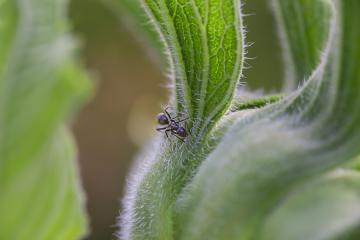
Odorous House Ants
Tiny brown ants that like to eat sweets
Indoors they usually nest near moisture sources such as near water pipes or beneath leaky fixtures
Outdoors they are usually found in exposed soil, under stacks of debris, near sidewalks and driveways.
Odorous house ants do not pose a public health risk, but they can contaminate food. They are a nuisance pest.
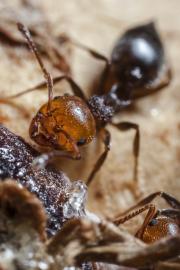
Acrobat Ants
Are light brown to black in color. They are relatively small and when looked down on the shape of their abdomen resembles a heart. They possess a stinger.
Most obvious sign of an acrobat infestation is the presence of actual ant trails on the structure leading into the structure. They will forage for food up to 100 feet away from their nest so you might see them trailing along the foundation, on sidewalks or driveways. Debris such as dirt and wood scraps that they deposit as they excavate their nests are another sign of their presence. If your home has siding, look for pieces of foam insulation or dirt debris, which could indicate where a nest is located.
Homeowners should check for moisture damage around the structure of the home which could attract acrobat ants, carpenter ants or other wood nesting pests like termites. Keep an eye out for peeling paint, mold or fungal growth, deteriorating wood around soffits and window frames.
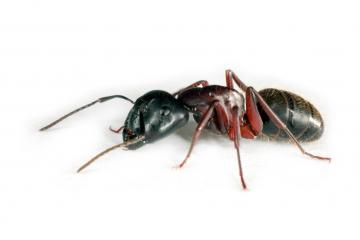
Carpenter Ants
Carpenter ants get their name from their nest building, where they will excavate the wood and form smooth tunnels inside of the wood. They do not eat the wood, they only tunnel or chew through wood to create their nests.
They vary in size and can be a combination of black and red or completely black, red or brown.
A mature black carpenter ant colony contains about 10,000-20,000 workers, with large colonies of more than 50,000 individuals. There is usually only one queen per colony. Swarmers are not produced until the colony is more than two years old.
The only external sign of a carpenter ant infestation other than the presence of worker or swarmers is the appearance of small openings on the surface of the wood. The ants expel debris through these openings which consist of sawdust-like shavings. The accumulation of the debris below the holes is a good indication of an active infestation. The gallery walls that carpenter ants create are smooth, with a sand-paper appearance. Active galleries are kept clean and free of debris. They prefer to attack wood that has been softened by fungus and are often associated with moisture problems. Homeowners should keep an eye out for excess moisture and soft, rotting wood around the structure.
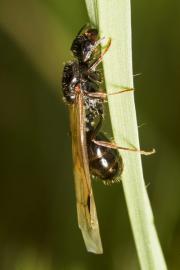
Harvester Ants
Harvester ants are rather large. They are orange to red or brownish black in color.
Harvester ant mounds can be large. Typically, large areas surrounding the mound are stripped of vegetation to prevent shading. Harvester ants usually remain with the nest during the hottest part of the day. Swarming typically occurs during the summer season, specifically in the afternoon following a rainfall. They collect seeds as their main food source, however, they do feed on other insects.
They sting when their nest is disturbed. Their sting can cause painful sores and possible allergic reactions in people.
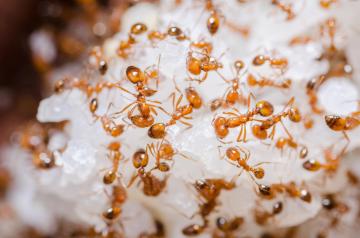
Fire Ants
Red Imported Fire Ants get their name from their ability to inflict painful bites and stings. These dark reddish brown ants are an invasive species found throughout SW Oklahoma.
These red ants build large mounds or nests that are irregular in shape. They usually nest in soil near foundations, in landscaping or in yards. Although they are often found outdoors, they can get access to buildings through HVAC systems, AC Units, cracks and crevices.
They should be avoided. Interfering with their nest can cause them to swarm and sting, resulting in painful welts.
If you notice any ant activity on your property or inside your home, call Red Dirt Pest Control for an inspection and to develop a plan to eliminate them for good.
